Brooklyn- Eric Hart Jr. is an emerging photographer whose work has been featured in editorial campaigns for The New York Times, I-D Magazine, Dior and many more. When I Think About Power is the artist’s first monograph, in which he explores power as it relates to black and queer culture.
Can you tell us about your background and how you got into photography?
I started taking photos about ten years ago, in 2012 or 2013. I started taking pictures with an iPod out in Lizella (Georgia), where I lived with my grandmother. We were surrounded by rural land, and we didn’t have any neighbours nearby, so I was the only kid in the house. As a result, I mostly had to entertain myself. I read lots of books, put collages on my wall, and at some point I stumbled across photography. That’s how I started. It was very random. I was out in the street taking photos of trees and our cat and I just fell in love with it. So I started taking self-portraits in my room and then setting up lamps and hot glueing towels together to make “studio” images. I started taking it really seriously. I would watch Youtube videos on photography and enlist my friends to do photo shoots downtown. Then I got a DSLR for Christmas, and it became continuous. I just began shooting all the time. I never intended to “become a photographer”; I just loved the idea of making a legacy out of this art form. Eventually, I looked into NYU and ended up applying and getting a full scholarship. I utilised my resources while studying to start working in the editorial and fine art worlds. It brought me to where I am now, working in both fine art and editorial.
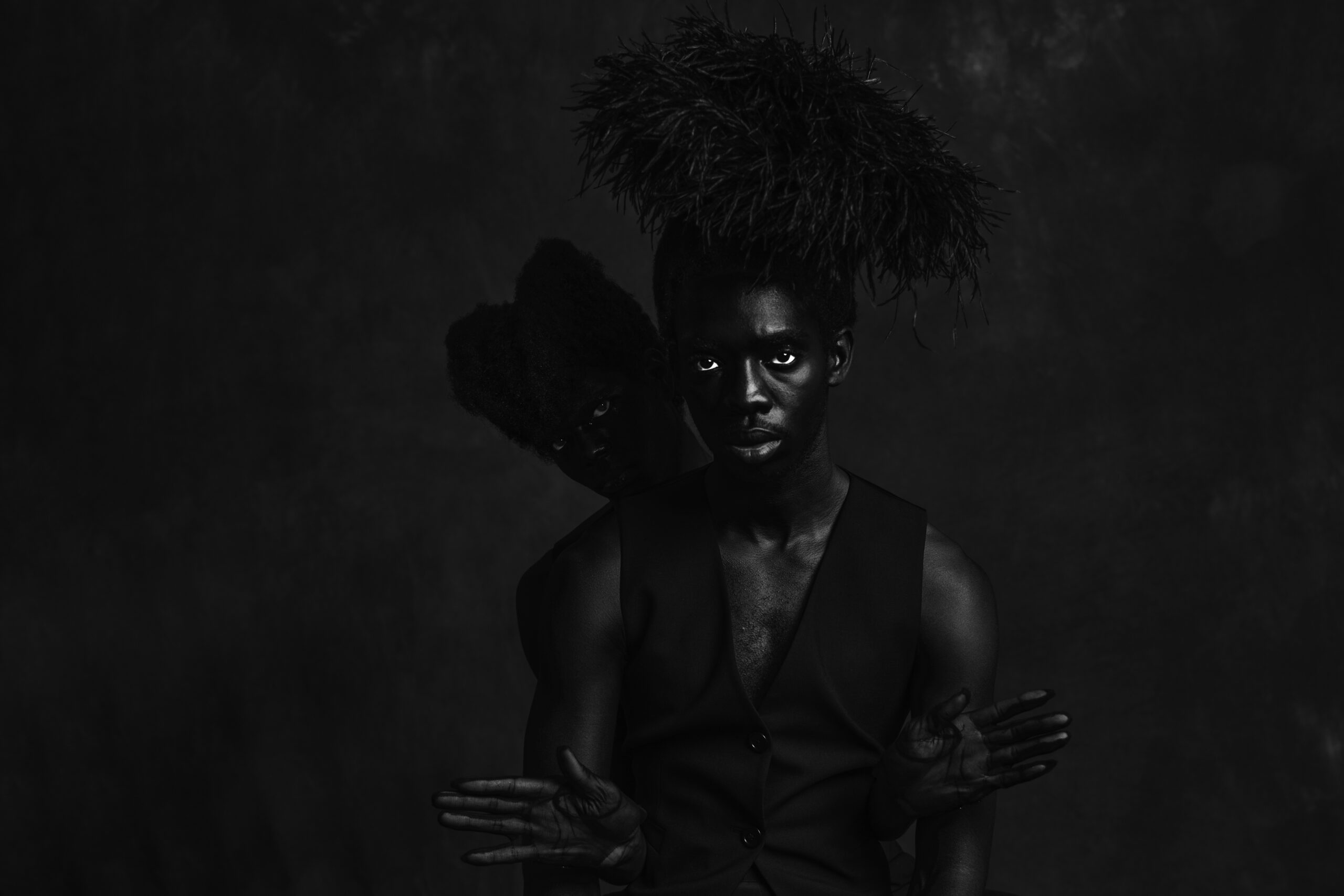
Who are some of your inspirations?
I’ve had a lot of different inspirations over the last few years. I have concrete people, most of whom I know, and then all of these spiritual inspirations like Beyonce, who I’ve never met, but would love to. Concretely, Dr Deborah Willis, a fantastic photographer in the department at NYU, has been a massive inspiration for me. Just watching how purposefully and intentionally she looks at images and her own work has pushed me to strive to be like her in the way she thinks, sees, and works. I got the opportunity to work with Spike Lee, and I’ll never forget him saying, “To make it in this industry, it takes talent, hard work, and luck. You have to have all three.” Being around him and watching how hard he works was an “aha” moment for me. There’s always more work to be done, and you can always push harder. That’s also one of those guiding principles in terms of my career. I’m always the person that’s like, “How do I push past my limits and expand what it is I can create?”
What did your earliest work look like?
It was similar to what I do now. I’m learning that a lot of the stuff I’m doing now is built on the back of what I was doing when I was younger. So at NYU, there was a lot of exploration. There were times when I was like, “I want to shoot like so-and-so,” so there was this era of images that David LaChapelle inspired where I produced a period of almost grainy and film-like pictures because that was what was in then. But throughout those phases, I always returned to this black-and-white feel and black-and-white aesthetic of very stark deep shadow and the lightest of white. So I just leaned into that. I stopped running from it and embraced that as my aesthetic and style. Even in my earliest days at NYU, that was aesthetic, but it’s just gotten stronger and stronger.
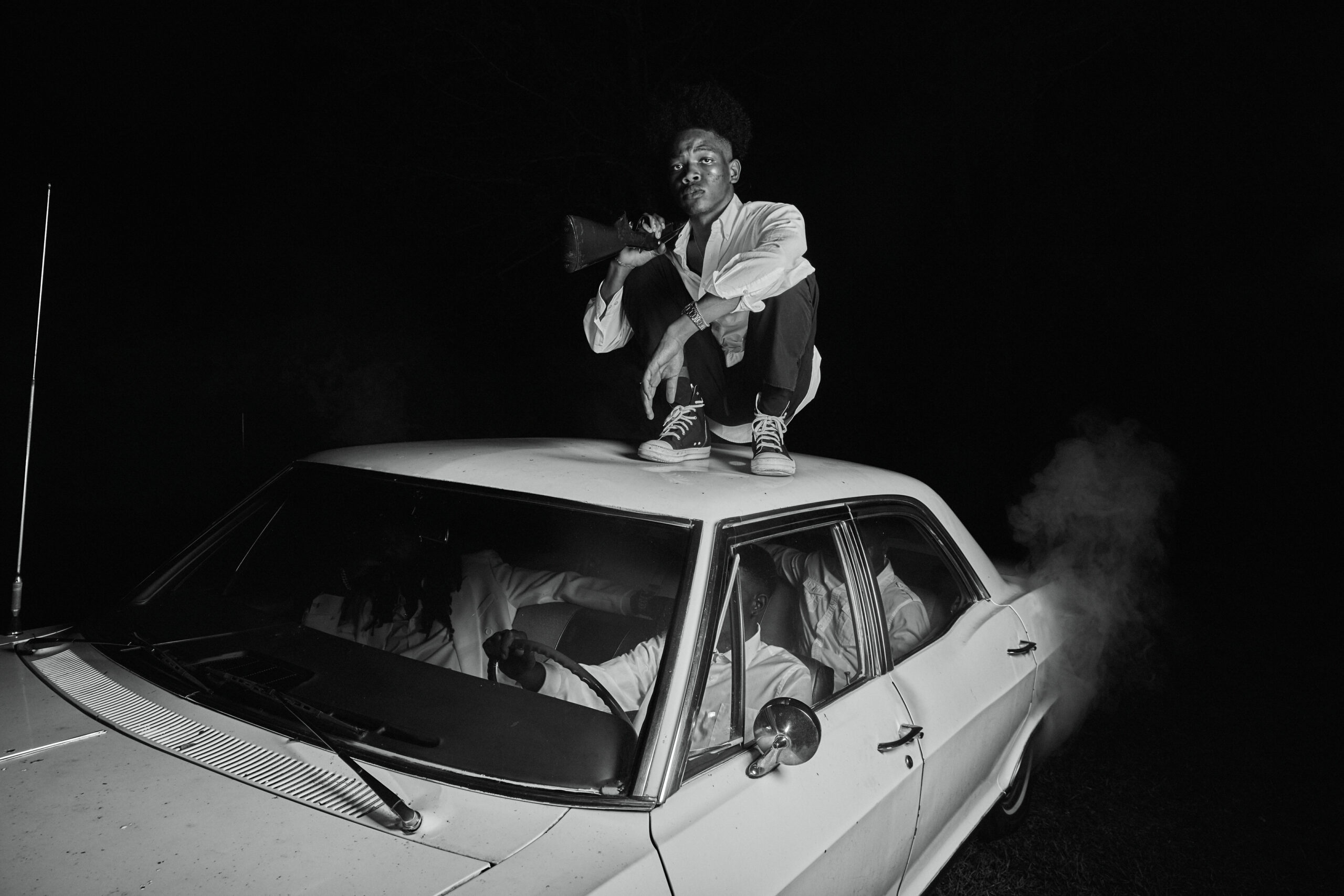
Can you tell me a bit about When I Think About Power?
When I Think About Power explores power as it relates to black queerness. It started as my senior thesis but led me out of college, and the year post-college, I was still working on it. I wanted to tap into my feelings, thoughts, and curiosities, so I wrote a poem based on everything I thought about power. The poem follows a rhyming format of “When I think about power, I think of blank,” it lists all the things I relate to power. I wanted to document that in a black queer way and create conceptual works with my fine art that dive into those curiosities and consciousness. I want all that to translate within the fine art world, and that’s where I found my inspiration.
How did you select images for your book? What was the editing process like?
I was trying to create the best body of work I could. I printed out a small size of every image and put them all on the wall. There were certain ones I definitely wanted to include. I shoot in an explorative way, so I might have themes in my head, but I’m not necessarily shooting for a specific statement or piece. I’m just exploring, which means I collect a bunch of images that are ideas. I had to piece together the ideas and question what individual images meant and what they meant as a collective. For me, it was necessary to break those down into sections divided by quotes from Black Queer Icons such as James Baldwin, Alvin Ailey, and Marlon Riggs. The sequencing process led me to use those quotes because it was like, ‘This is what I’m trying to say, and this is what I’m dealing with within this section of images.’ Then, after that process, I realised that more could be said about work. So I would start shooting again.
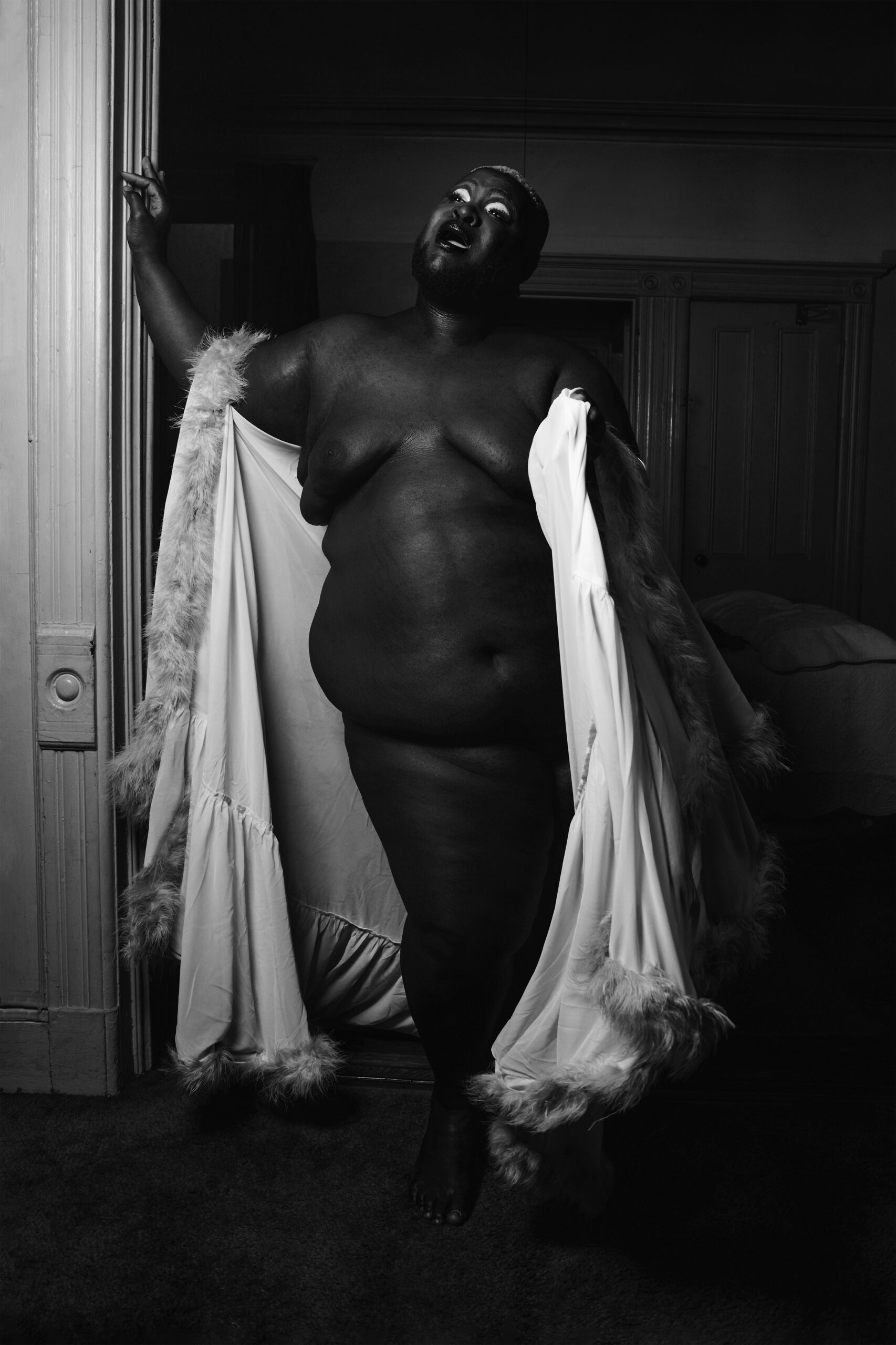
You mentioned the poem that you wrote. Do you often involve writing in your process?
When I Think About Power and Mister Mister Series were both based on poems. I took things in my journal and played with them as an idea to write about or expand upon visually. I think all of my work is rooted in words that I have written. But when writing, I don’t have the end goal of a series in mind. I am just writing.
Can you talk more about your Mister Mister Series?
I was a Google Fellow last year. The series opened last month, but it was a 10-month program, and we all had mentors. Lyle Ashton Harris was my mentor and another inspiration for me. We worked through a photo series from start to finish, and my photo series was titled Mister Mister. It was based on the Shakespeare quote, ‘All the world’s a stage, and all the men and women merely players.’ I challenged that in my artist statement and followed up by asking- if all the world’s a stage, for whom is the show? I really wanted to tackle this idea of performance and what it means to perform as a black queer man in the world on a daily basis. I thought about behaviour, how we act and how we present ourselves. I pay attention to those things because I am working them out as a human.
That’s where the inspiration came from for the work. It was a really fun series to work on because it was campy, theatrical, and heavily researched. I researched theatrical forms of performance, such as minstrel shows, comedy and tragedy masks. I dove into what those things mean and what theories have been read about the way black people perform, such as the double consciousness or black skin white mask. All those things brought together this really cool series. I’m working on extending it because it was only ten images, but I really fell in love with creating it.
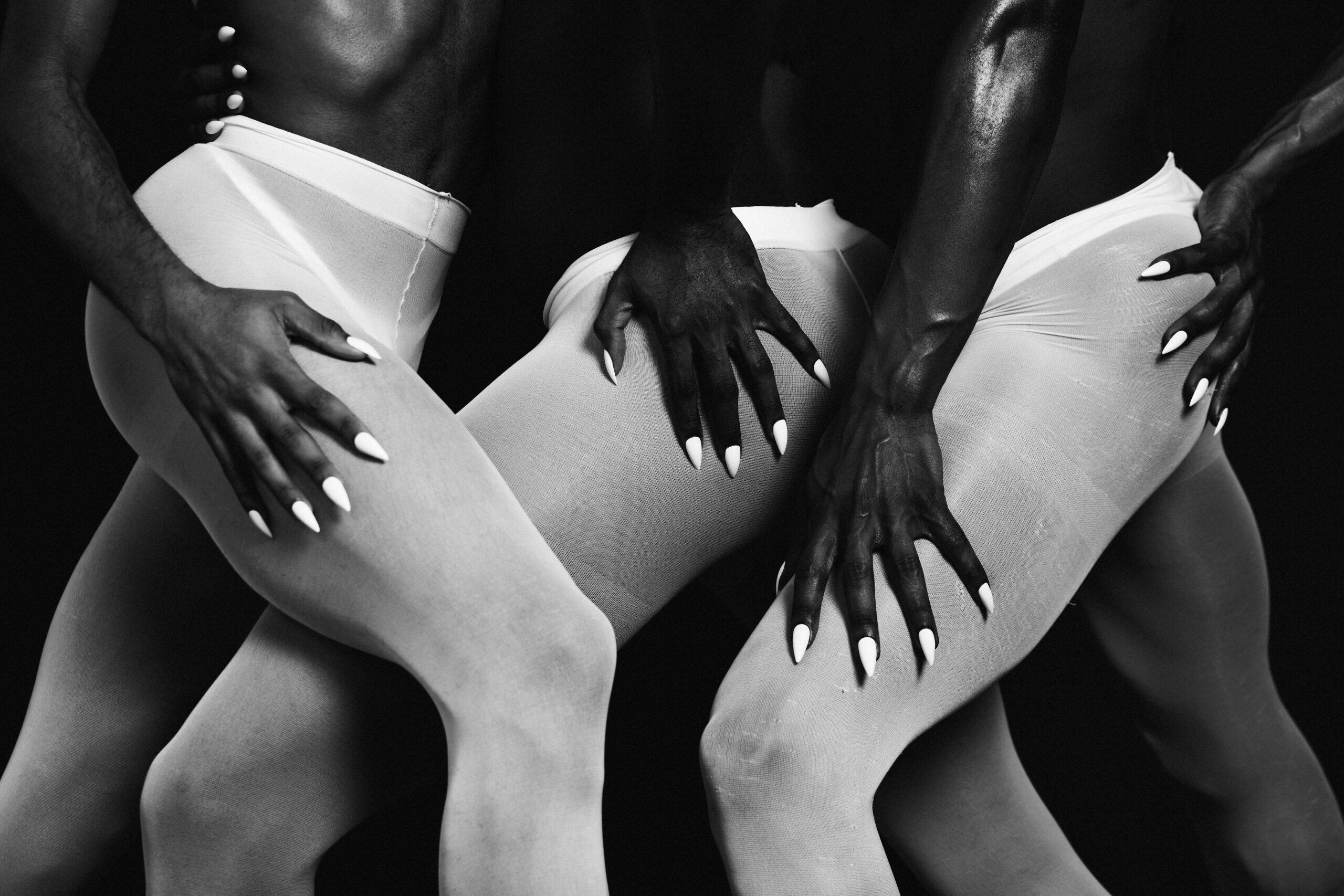
What is your process for editing and selecting your photographs from start to finish?
I’m building a world within my photography now more than ever. Especially with the release of the book. I had to really think about what kind of artist I wanted to be, how I wanted my work to look, and what I wanted to say in one body of work that someone could carry
and have with them. Going back to earlier, my work is black and white, identity-based, and powerful. Even if I’m dealing with something tragic or traumatic, it’s about the power of it and taking your power back. For me, the canon I’m creating is a message of rejecting control and
society’s ideas of who you should be. It can be a poem, a photo series, a video, or whatever. From an aesthetic standpoint, my work is stark black and white, striking, polished, and very clean. My work is very stylised.
How has your photography changed over time, and what has influenced that change?
When I first started, I was obsessed with aesthetics. It was about creating a nice image, which still shows in my work. However, the big shift for me was realising that photography can be used to send a message, to explore what you’re thinking about, and to say what you’re feeling. Learning about the intention that can come with photography shifted my perspective from just creating honest aesthetics. I want to lean more into that in terms of where I’m going. I want to find that intentional messaging and curiosity and lean into it in every form of visuals, writing, or whatever I do.
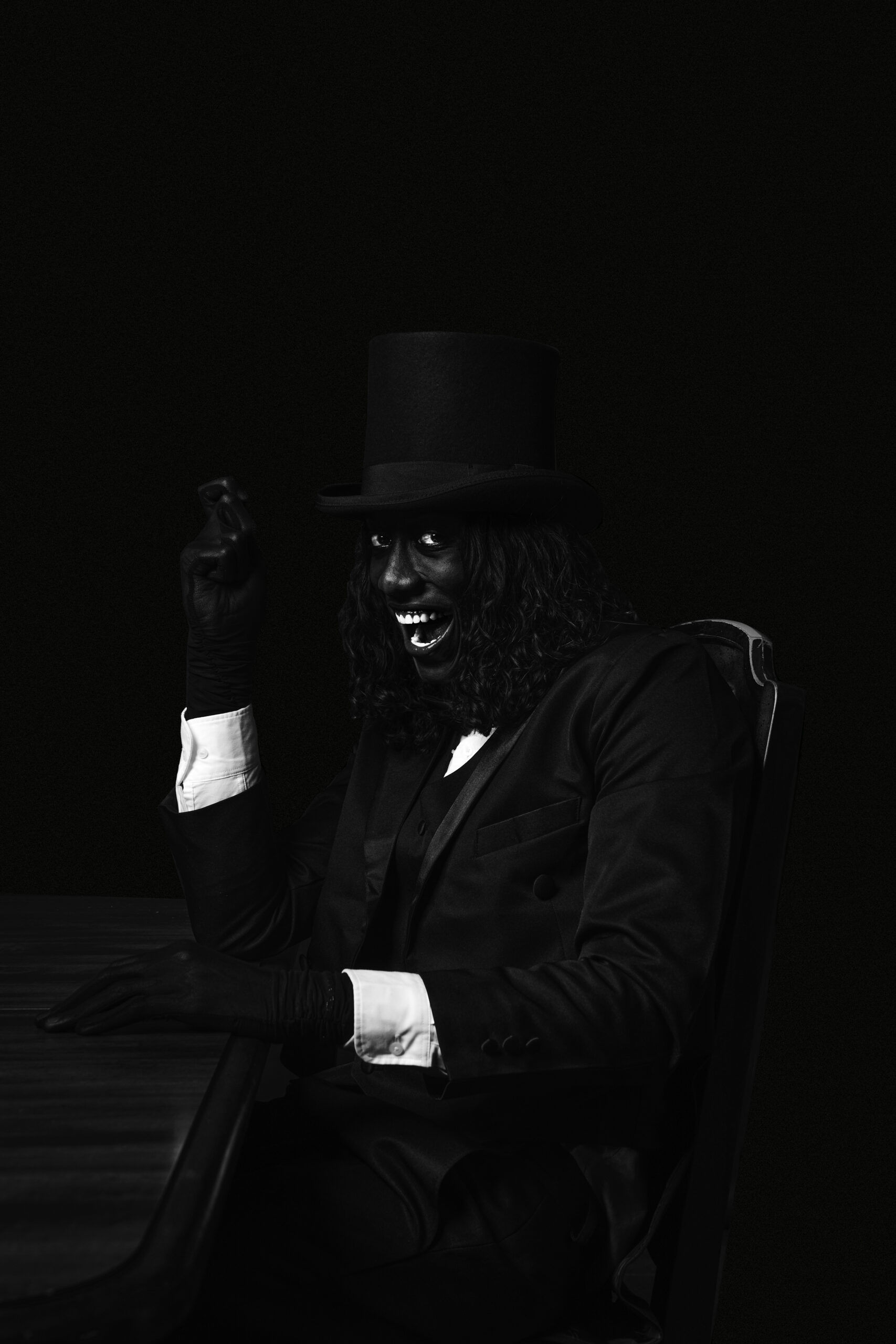
What challenges have you faced in your career so far?
The biggest challenge I face is trusting my vision. When you’re trying to make it and get your foot in the door, it can be difficult not to change your approach to fit what you think will get you a job or a paycheck. You see so many people doing one thing, and it’s tempting to follow suit, but you have to stick to your guns and know that what you’re creating has an audience. Your aesthetics, your approach, and what you care about can be the foundation for an amazing career. You don’t have to do what anyone else does; you just have to be yourself and trust that it will work out. It took me a long time to learn this, but I feel like I’m there now.
Of your own photographs, do you have a favourite?
The one that comes to mind is What I Think About Power, which is the first image in the series. It’s a black-and-white image of a man with sets of nails on his neck, looking over his shoulder. That was the first image I took where I felt reflected in the picture, and it was the first time I’d ever taken a photo that was both powerful and vulnerable. Seeing that in one frame shifted the way I shoot. Currently, my favourite image is from Mister Mister, and it’s called ‘Double Conscious #1.’ There’s a model who looks frustrated, and his hair is in a weird updo with an ostrich feather hat attached to the top. Behind him is a guy holding him with jazz hands, and it’s just a shadow. When you see that image printed and put on a wall, you only see the shadow if you turn it a certain way. It’s a really cool effect of seeing a print come to life. I’m obsessed with the physical right now, so that’s my favourite image at the moment.
Can you discuss your approach to composition and framing in Double Conscious #1?
I was thinking a lot about control and performance. I wanted the models to do performative
motions and gestures, like jazz hands. I wanted to take some shots where it felt like one model was holding up the other like he was literally controlling him. That’s where the idea came from. Of course, I also researched the concept of double consciousness and thought about how behaviour and performance have been tied to Black history and control. That’s how I came up with the name and the concept of double consciousness.
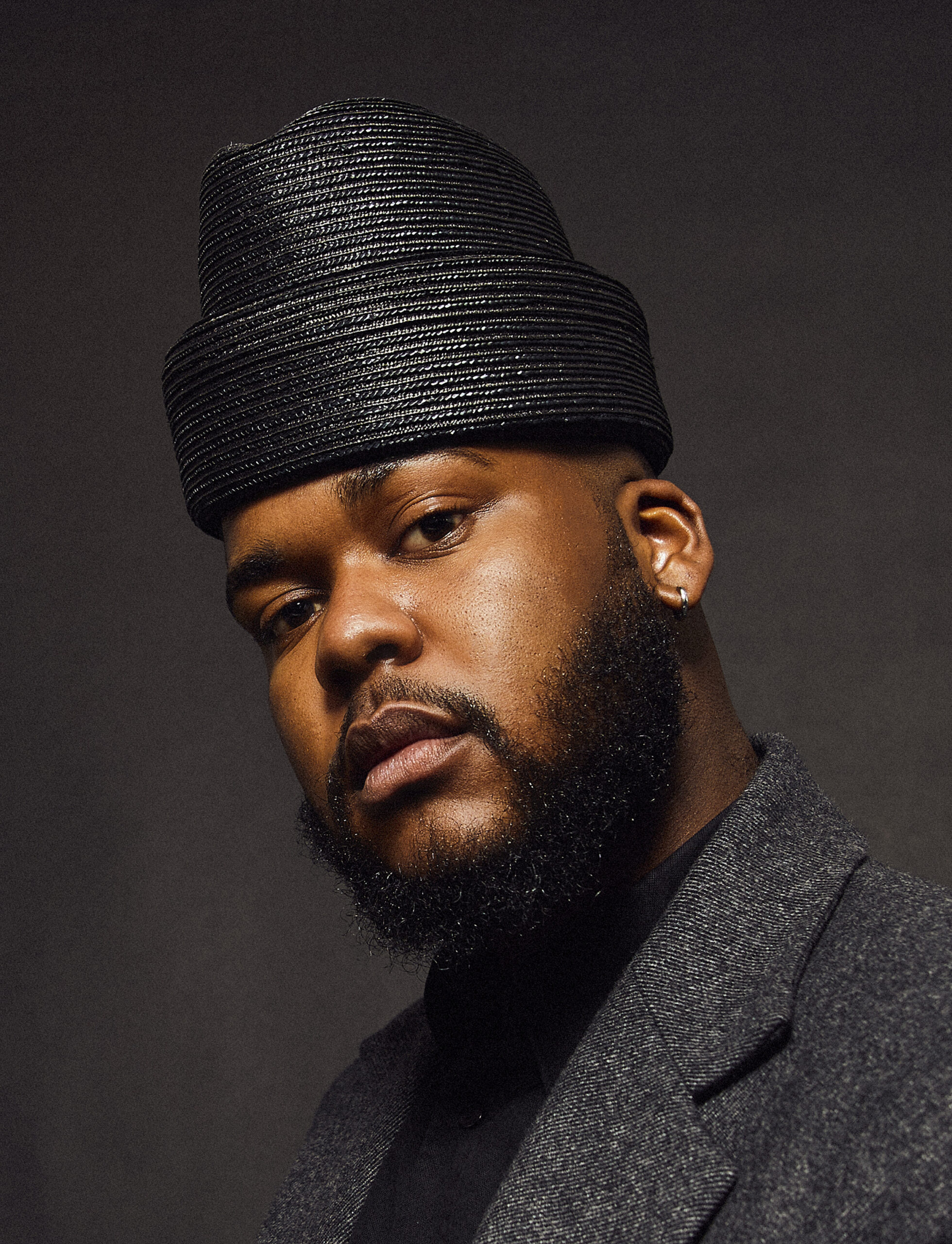
What do you hope your legacy will be?
I want to create a body of work and a legacy that lives beyond me, I want to have a legacy that has an impact on black and queer culture. I want one of those careers that’s one of one, like Oprah Winfrey, Spike Lee or Beyonce. These people have put time and effort into everything they did to continue to push culture along. That’s what I really want out of my career.
Words by Moshopefoluwa Olagunju





